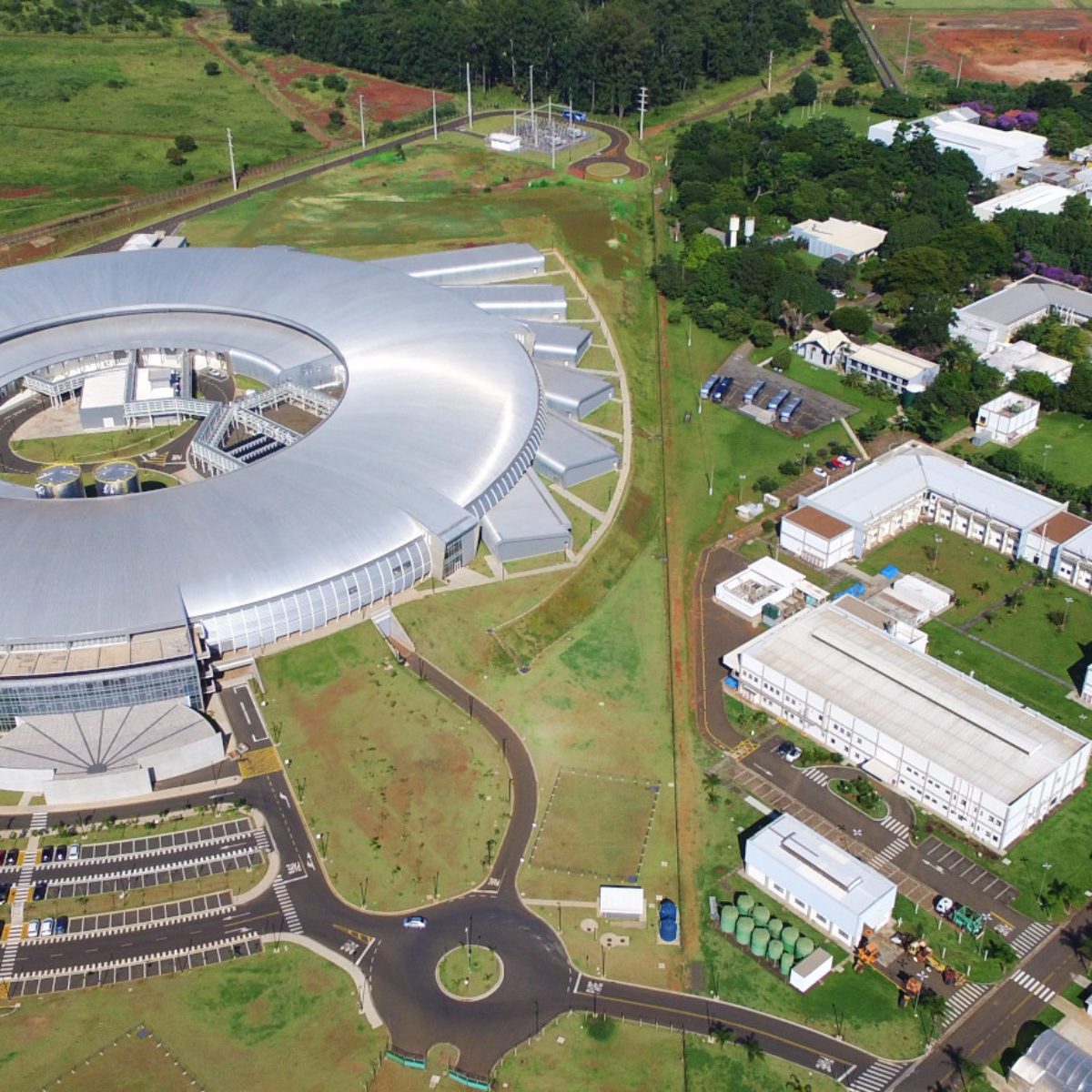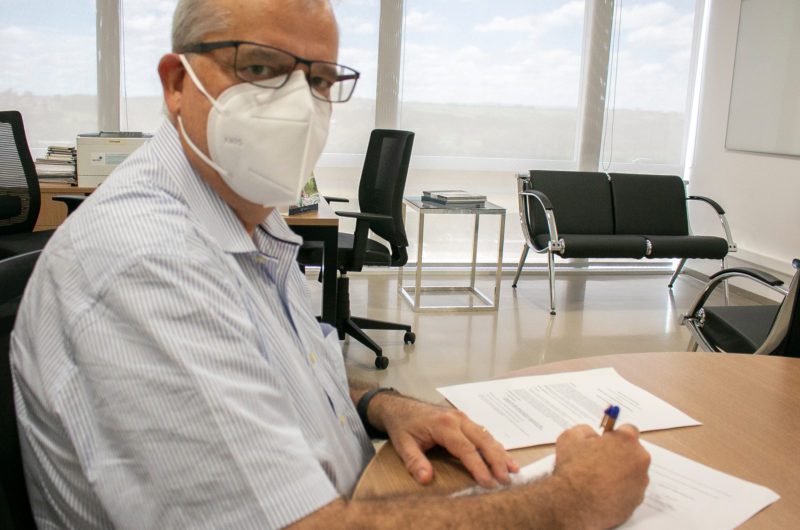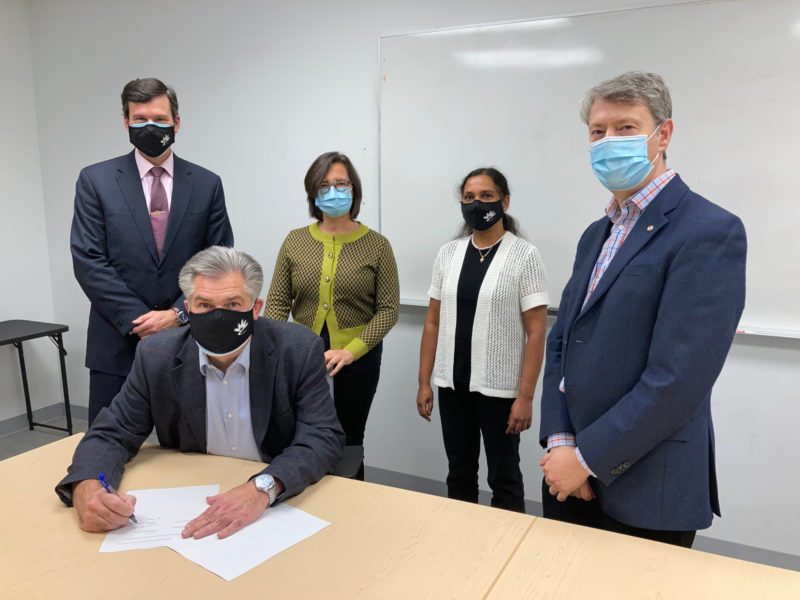
Agreement will speed up the exchange of knowledge about techniques and uses of synchrotron light between researchers from Brazil and Canada
Over the last decade synchrotron light has developed into one of the most valuable scientific tools for the investigation of new materials, bio-medical samples, and biological and chemical processes. To strengthen existing programs, joint development of new programs and techniques, a new memorandum of understanding (MoU) has been signed by the Brazilian Center for Research in Energy and Materials (CNPEM) and the Canadian Light Source (CLS). The technical and scientific collaboration agreement aims to promote knowledge exchange to advance research in synchrotron science and its applications, especially in the field of agriculture.
CNPEM is responsible for the design and operation of Sirius, the largest scientific infrastructure ever built in Brazil, funded by the Ministry of Science, Technology and Innovation (MCTI). Sirius is a fourth-generation light source, where electrons are accelerated to generate extremely bright radiation, called synchrotron light, to develop cutting-edge science in the study of the structures of organic and inorganic materials.
The Canadian Light Source is a national research organization owned by the University of Saskatchewan. The entity maintains a third-generation synchrotron light source, which annually serves around 1,000 academic and industrial researchers from diverse research fields and many countries.
Maple Project
One element of the collaborative agreement is specifically aimed at facilitating the exchange of knowledge and access to research resources for experiments related to agriculture. It is the key aspect of the new program Maple project, which will encourage collaboration between Brazilian users of the Sirius light source to and the CLS for agriculture-related experiments, through mail-in access.
“Studies in agriculture are essential to respond to the challenges that the future holds, and the use of synchrotron light as a research tool offers great potential in the search for scientific answers in this area”, highlights José Roque, director-general of CNPEM.

Antonio José Roque, Diretor-General for CNPEM, signs Memorandum of Understanding with Canadian Light Source (CLS).
Scientists from both entities will work together to grow the applications of synchrotron science in agriculture via workshops, presentations on proposal writing, and developing research projects.
“We look forward to this new collaboration with our colleagues in Brazil,” said Bill Matiko, Chief Operating Officer of the CLS. “Their world-leading expertise in the development of next-generation light sources will contribute enormously to our long-term planning. Together we will advance agricultural innovation in both our countries by expanding the applications of synchrotron technology in agricultural research–from soil and plants to food and animals.”

Mark Boland, Machine Director; Bill Matiko, Chief Operating Officer; Lucia Zuin, Senior Scientist; Chithra Karunakaran, Science Manager; and Gianluigi Botton, Science Director.
The agreement also creates conditions for proposals for experiments in the area to be evaluated more quickly. For the director of the Brazilian Synchrotron Light Laboratory (LNLS/CNPEM), Harry Westfahl, “the partnership between CNPEM and CLS will be able to foster research in agriculture, as both institutions have extensive experience in cutting-edge research with synchrotron light and may benefit from joint research and information exchange”.
Engineering
The MoU between the Canadian Light Source (CLS) and CNPEM includes collaboration on Accelerator Systems Development, in the exchange of knowledge in the field of engineering components and operating processes of equipment designed for state-of-the-art accelerators. Points of common interest include survey and alignment, superconducting RF, solid state RF amplifiers, insertion devices and permanent magnet dipoles.
About CNPEM
A sophisticated and effervescent research and development environment, unique in Brazil and present in few scientific centers in the world, the Brazilian Center for Research in Energy and Materials (CNPEM) is a private non-profit organization under the supervision of the Brazilian Ministry of Science, Technology, and Innovations (MCTI). The Center operates four National Laboratories and is the cradle of the most complex project in Brazilian science – Sirius – one of the most advanced synchrotron light sources in the world. CNPEM brings together highly specialized multi-thematic teams, globally competitive laboratory infrastructures open to the scientific community, strategic lines of research, innovative projects in partnership with the productive sector, and training for researchers and students. The Center is an environment driven by the search for solutions with an impact in Agriculture, Health, Energy, Environment, New materials, among others.
The unique and complementary skills present at CNPEM encourage Research and Development (R&D) in areas of synchrotron light; accelerator engineering; drug-discovery, including from plant species of Brazilian biodiversity; molecular mechanisms involved in the onset and progression of cancer, heart disease, and neurodevelopment; functionalized nanoparticles to fight bacteria, viruses, cancer; new nanostructured sensors and devices for the oil and gas, health and agricultural and environmental sectors; biotechnological solutions for the sustainable development of advanced biofuels, biochemicals, and biomaterials; and molecular and microscale mechanisms of water and nutrient movement in soils.
About CLS
The Canadian Light Source at the University of Saskatchewan is a national research facility, producing the brightest light in Canada—millions of times brighter than even the sun. One of the largest science projects in our country’s history, the CLS hosts annually more than 1,000 scientists from around the world who use our light to conduct ground-breaking health, agricultural, environmental and advanced materials research.
The Canada Foundation for Innovation, Natural Sciences and Engineering Research Council, National Research Council of Canada, Canadian Institutes of Health Research, the Government of Saskatchewan and the University of Saskatchewan fund our operations.
The decision was announced during the closing session of the 31st LNLS Annual Users Meeting (RAU), on November 11th, 2021
This call for proposals intends to supply beamtime for the users during the beamline commissioning period